A reciprocating saw can be an excellent tool for landscaping tasks. While many people reach straight for the pruning shears when it comes time to do pruning work, a reciprocating saw can usually make quicker work of the job.
Reciprocating saws can be used to handle a variety of pruning tasks, from cutting down tree branches to trimming hedges and cutting back vines. They are much easier to use than pruning shears since it requires less manual labor, but because it is a power tool, it must be used carefully to avoid injuries.
Reciprocating saws are great for pruning, but they have to be used properly so that you don’t do damage to your landscaping. Keep reading to learn more about how to prune with a reciprocating saw and how to get the best results by using one.
What is a Reciprocating Saw?
A reciprocating saw is a handheld power tool that is shaped somewhat like a hand drill but has a reciprocating blade attached to the end instead of a drill bit. Because of its relatively small size and horsepower in comparison to larger saws such as chainsaws, a reciprocating saw can’t handle heavier jobs like cutting through a tree trunk. But its lightweight portability and the speed it can work at makes it perfect for lighter pruning chores.
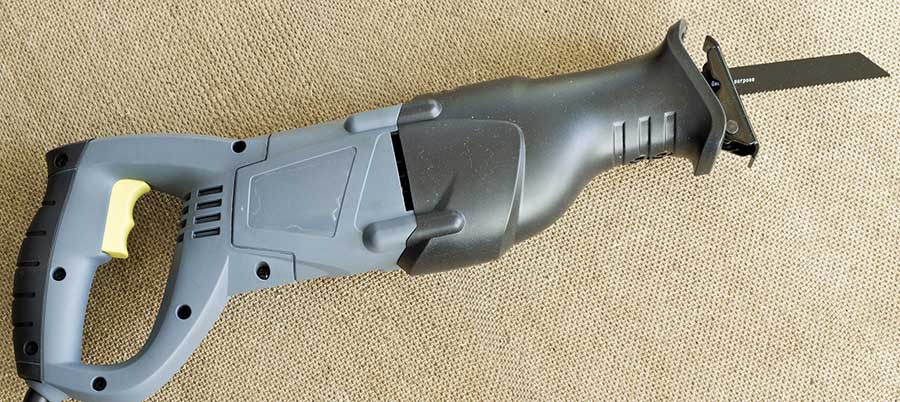
The word reciprocating means (at least in mechanical jargon) to move back and forth in a straight line. So, a reciprocating saw prunes tree branches and hedges by sawing away at the foliage at a fast rate. This push-and-pull motion is what forces the blade through the wood and leaves.
Reciprocating saws are some of the most versatile tools in the modern range of power tools and are used a lot in finer construction jobs such as home renovation. In landscaping, reciprocating saws are a useful replacement for pruning shears and a less dangerous (and less powerful) replacement than larger saws such as a chainsaw.
Reciprocating saws come in a wide variety of different power levels and price ranges. So, if you’re trying to choose a reciprocating saw for pruning work, it’s important to do some comparison shopping so that you end up with the most powerful tool for your money that is still small and portable enough to be convenient for yard work.
What Can You Cut with a Reciprocating Saw?
In pruning and landscaping, reciprocating saws are useful for cutting through the following materials:
- Invasive saplings: Once an invasive tree sapling gets to a certain size, it can become difficult to pull it out of the ground without some serious hassle. Instead, you can use a reciprocating saw to cut the sapling off at the ground level. A sapling doesn’t have as many energy reserves as a mature tree, and in almost all cases, this will eradicate it.
- Small tree branches: Many older trees can develop suckers along the base of their trunks, which are new tree branches that can mess up the structure of a tree and can also sap valuable nutrients away from the more desirable branches at the top of the tree.
- Overgrown hedges: Trimming hedges are one of the best tasks for reciprocating saws since the saw’s mechanical action allows the landscaper to create a smooth, even surface over the hedge. By using a reciprocating saw, gardeners can create smooth and intricate topiaries.
- Overgrown bushes: Reciprocating saws are as good at trimming bushes down to size as they are at working over hedges. For bushes with a smaller base, a reciprocating saw can even be used to remove the bush by cutting it off at the ground level before removing the stump separately.
- Overgrown vines: Overgrown vines are not only unsightly in some cases, but they can also cause structural damage to buildings such as gazebos and sheds. Reciprocating saws can make quick work of tough vines that would be more difficult to do with regular pruning shears.
- Thorny plants: Thorny plants can be more difficult to prune with pruning shears because they put the landscaper in closer contact with the thorns, but a reciprocating saw allows them to maintain some distance. Together with a good pair of gardening gloves, reciprocating saws can help you get thorny plants pruned without getting scratched up in the process.
As you can see, there are plenty of different things that a reciprocating saw can help you prune. In many cases, the reciprocating saw can do an even better job than other pruning tools.
Can You Cut Branches with a Reciprocating Saw?
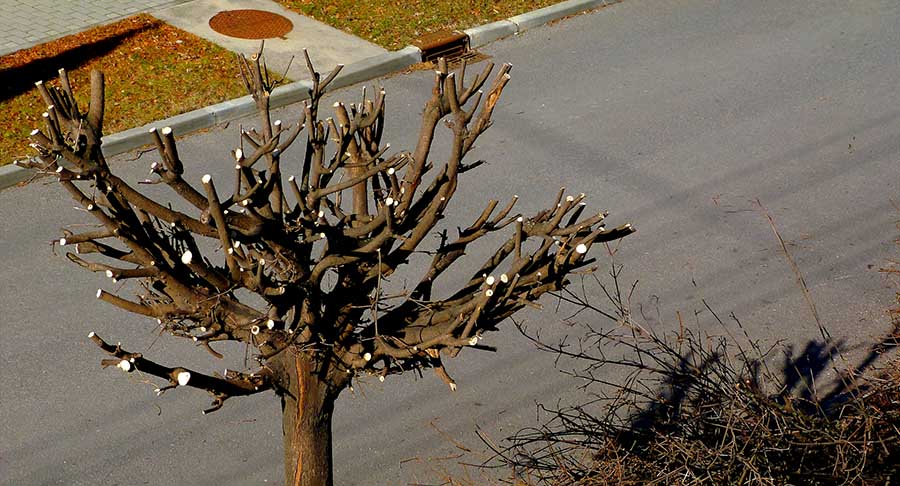
Branches and limbs can be cut with a reciprocating saw; you can even cut young trees (provided the diameter of their trunk is thin enough). The biggest problem with getting a reciprocating saw to cut a tree branch is that many branches are flexible and bend under the force of the saw, which causes the saw to shake the tree branch rather than cut through it.
There are two major constraints on the size of tree branches that a reciprocating saw can reasonably cut:
- Blade length: Because reciprocating saws are relatively small handheld tools, the blades attached to them are not long or wide enough to make powerful plunging cuts for thicker cuts of wood.
- Horsepower: Cordless reciprocating saws are more portable but less powerful than corded reciprocating saws. The more power a reciprocating saw has, the larger the branches it can handle cutting.
With reciprocating saws, you need to be aware of how powerful your saw is before you attempt to cut any tree branches. For figuring out whether your reciprocating saw is strong enough to cut your branches or not, here’s a general rule of thumb:
- Four inches or less: With tree branches that are four inches in diameter or less, a cordless reciprocating saw is usually strong enough to handle cutting through the wood.
- Six inches or less: Wider tree branches may be more difficult to cut with a smaller, less powerful cordless reciprocating saw, so for these larger branches, a more powerful corded model may be necessary.
For branches that are wider than six inches in diameter, a more powerful saw such as a chainsaw is a better option than a reciprocating saw. Some reciprocating saws come with an orbital feature—this allows the blade of the saw to revolve slightly as it goes back and forth, allowing it to make a faster cut.
Can You Use a Reciprocating Saw to Trim Hedges?
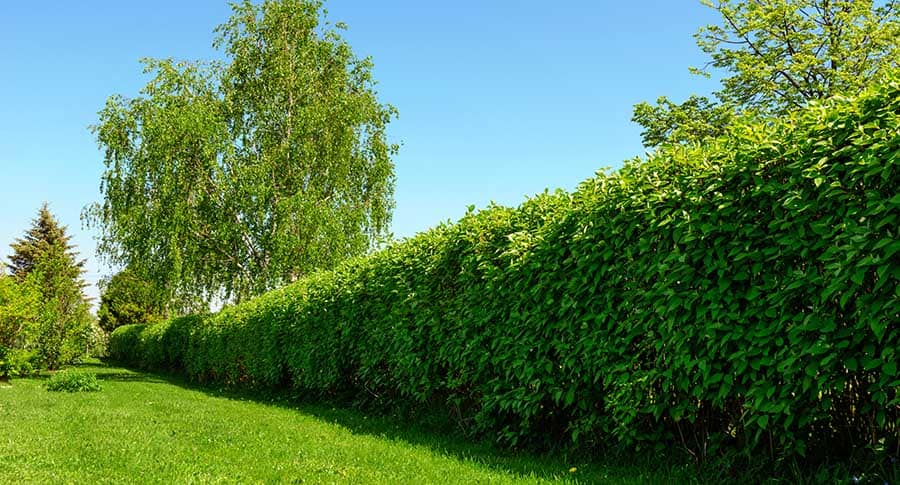
Of course, you can! A reciprocating saw is one of the best tools you can use to trim hedges because of how quickly and evenly it can be accomplished with a mechanical saw versus trying to trim the hedge by hand. The only issue with trying to cut hedge branches is that they can be very elastic, which may make it difficult for the reciprocating saw blade to catch onto the foliage without it being held stationary.
Some reciprocating saws also come with special features designed specifically for landscaping work like head trimming, such as the following:
- Spring-loaded claws to hold springy hedge branches stationary for cutting
- Special saw blades to cut through green wood more easily
If you plan on doing a lot of hedge trimming with your reciprocating saw, it can be worth checking the market for a reciprocating saw specifically designed for landscaping work rather than a more general model. They usually come with accessories that make hedge trimming and other landscaping work much easier. General reciprocating saws are usually geared more towards renovation work, and as a result, their design may not be as effective as gardening saws.
Here are some tips for effectively using a reciprocating saw to trim your hedges:
- Start at the bottom of the hedge and cut the thickest branches back to the trunk. Pruning encourages new growth, causing the bottom of the hedge to fill out more thickly while also removing older or diseased branches.
- Trim hedges down to two feet in the spring. While this might seem like a pretty short haircut for your hedge, the hedge will put back on a lot of growth for the growing season and will come back in looking better than before.
- Try to shape the hedge to be broader at the base and thinner at the top. Along with lending an aesthetically pleasing shape to the bush, it also allows optimal exposure to sunlight for the entire bush so that it can grow more efficiently.
- Use smaller reciprocating saw blades to cut smaller twigs and branches on shrubs and bushes, since these smaller blades are less likely to bend with the material and can cut through without causing the branches just to bounce off.
- Change the angle of your cut if you’re trying to prune a larger branch or trunk—angle the cut from two angles to cut through the material faster, keeping the shoe of the reciprocating saw flush against the wood to cut more smoothly.
While it might seem counter-intuitive, pruning hedges can cause them to grow faster and bushier than if you didn’t maintain them.
Advantages of Using Reciprocating Saws for Pruning
There are many reasons why you might want to try using a reciprocating saw for pruning jobs instead of pruning shears. Here are a few of them:
- Easy use: As far as power tools go, reciprocating saws are considered the “gateway tool” into larger power tools and appliances. Because of their relatively light size and weight, reciprocating saws can be used by a wide variety of landscapers, including women, adolescents, and the elderly.
- Less upper body strength needed: A reciprocating saw depends on mechanical energy to cut rather than the landscaper’s upper body strength like with pruning shears, which means that not only can a landscaper with a reciprocating saw get the job done faster, they can also get it done with a lot less exhaustion at the end of the job.
- Versatility: Reciprocating saws are one of the most versatile handheld power tools that you can own, and you aren’t limited to using it on pruning jobs. You can also get your money’s worth out of your reciprocating saw by using it in other home renovation projects around the house.
- No kick-back: The problem with using a chainsaw is that there is often a lot of kick-back from the machine as it operates, which can startle novice users and can even cause them to drop the chainsaw. This is a serious and potentially fatal accident waiting to happen. In comparison, a reciprocating saw operates much more smoothly and is less dangerous to operate.
- Lower blade costs: While reciprocating blades need to be replaced just like a chainsaw blade, the advantage of reciprocating blades is that they are generally a lot cheaper than the blades of other saws, which means that even if you have to replace them a lot, you’re not going to be out a lot of money for it.
Even though reciprocating saws are a powerful tool and should be used with respect, there are many benefits of investing in one if you have a lot of landscaping to handle. Even though these small saws can’t handle larger cutting jobs like taking down trees, they are still capable of handling most of the hedge, bush, and branch-related jobs you have in your yard.
Disadvantages of Using Reciprocating Saws for Pruning
There are lots of reasons why you might want to get a reciprocating saw for your pruning work, but there are also a couple of drawbacks to using this tool for pruning, too.
Here are some of the reasons why you might want to reconsider using a reciprocating saw for your landscaping job:
- Can’t handle thicker cuts of wood: If you’ve got trees that need to be completely taken out of the yard, you’re going to have a hard time getting it down with a reciprocating saw unless it is a very small tree with a slender trunk. Mature trees need saws with powerful motors such as chainsaws to take down.
- Can be dangerous to use: In comparison to pruning shears, reciprocating saws are much more dangerous to use due to the electrical component combined with the speed and sharpness of the blade. A reciprocating saw can easily tear through flesh and bone, so upmost care needs to be used when operating one.
- Corded reciprocating saws can be a hassle: You may need a corded reciprocating saw for the extra power, but the fact that these saws need to be plugged in to function can limit their portability in the yard.
Reciprocating saws can be a great tool for many pruning jobs, but there are some jobs it isn’t capable of handling safely. Make sure that you read the operating instructions for any model of reciprocating saw you’re considering purchasing to make sure it’s the best tool for the pruning job you’re trying to get accomplished.
When is the Best Time of Year to Prune with a Reciprocating Saw?
The best time of year for pruning your bushes, hedges, and trees with a reciprocating saw depends on the type of plants you’re trying to prune. Each of them has different requirements for when they should be pruned to have the best lasting effect on the foliage.
Here are some guidelines from Iowa State University, that you should follow for timing your pruning jobs throughout the year:
- Spring-flowering deciduous shrubs: Spring-flowering deciduous shrubs that are healthy should be pruned right after they finish flowering for the year. At the same time, spring-flowering deciduous shrubs that need restoration should be pruned in late winter or early spring. While this type of pruning will prevent flowering in the year that it is performed, it will help improve the health of the plant and ensure better blooms for the following year.
- Summer-flowering deciduous shrubs: Summer-flowering deciduous shrubs should be pruned in late winter or early spring. The advantage of having summer-flowering deciduous shrubs versus spring-flowering deciduous shrubs is that even if you prune these shrubs in the spring, they will gain enough growth by the summer that they’re still able to bloom in the same year.
- Fruit trees: Fruit trees should be pruned in late winter to early spring. Make sure that any pruning on fruit trees is done early enough in the spring that the tree has not begun to bud out. This can negatively impact the fruiting of the tree as it diverts energy from budding to healing itself.
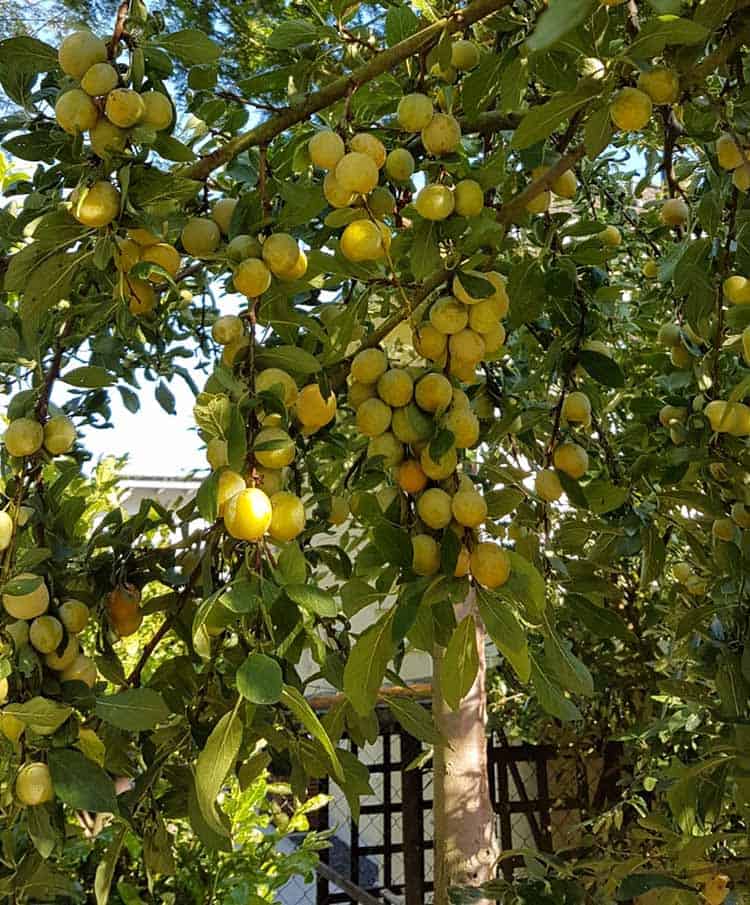
- Non-flowering deciduous shrubs: Non-flowering deciduous shrubs should be pruned in late winter or early spring. Since these shrubs don’t have blooms, you don’t have to worry about pruning affecting the shrub’s flowers.
- Evergreen shrubs: Evergreen shrubs should be pruned in mid-spring before they begin to put on new growth for the year. Some minor pruning can also be done in the middle of the summer but should be minimized. Too much pruning in summer can cause an evergreen to put on growth too late in the fall before it has a chance to harden off, and this can lead to freezing damage on the shrub when winter hits.
- Deciduous trees: Late winter to early spring is the best time to prune most deciduous trees. The major advantage of pruning deciduous trees during this period of the year is that the lack of leaves makes it easier to see the structure of the tree’s branches. Still, deciduous trees can be pruned at any time of year without causing damage.
- Evergreen trees: Evergreen trees don’t need much pruning, but any dead, dying, or diseased branches can be removed at any point throughout the year.
Most trees, shrubs, and hedges can be pruned in late winter or early spring to cause the least amount of damage to the plant while maximizing the new growth encouraged by the pruning process.
How to Maintain a Reciprocating Saw After Pruning
Reciprocating saws can last a lot longer if they’re cared for properly, so if you want to keep your saw around for several seasons of pruning work, you should learn to take care of it properly. These are some methods for making sure your reciprocating saw remains in good shape between pruning jobs:
- Replace blades often. Since reciprocating blades are relatively cheap, it’s a good idea to replace them before they get extremely dull. Dull blades make pruning work more difficult and can force the landscaper to use more physical force with the saw, which can make for riskier pruning work. Keep your blades sharp by removing and replacing them as needed.
- Dry the saw if it becomes wet. If your reciprocating saw becomes wet from rain, snow, or other moist conditions, make sure that the saw is dried thoroughly before it is put into storage. You should also wipe down and dry the saw blade if you’ve been cutting very green foliage, as this foliage contains a lot of water.
- Use a vacuum cleaner or blower to dust out the saw. Sucking on the saw’s housing with a vacuum cleaner attachment or blowing the saw down with a blower can help dislodge any dust, dirt, or wood shavings that might get blown up into the saw. Over time, this debris can accumulate and negatively impact its operation.
- Keep the saw lubricated. Using saw oil to lubricate your reciprocating saw helps the blade to remain cool as it cuts, while saws that aren’t well-lubricated can become very hot from the associated friction. This overheating can cause the saw to wear down more quickly over time, so lubrication is a good idea for extending the life of the tool.
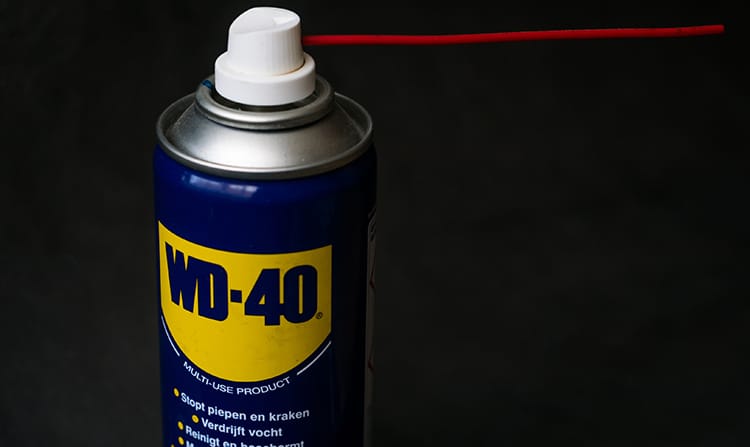
A reciprocating saw is a good tool for pruning, but it can become worn easily without proper care between cuttings.
Safety Tips for Using a Reciprocating Saw for Pruning
As effective as reciprocating saws are, you must remember that they are power tools, and that means that they can be dangerous if they’re used carelessly. The small size and light weight of a reciprocating saw may cause some landscapers to become overly confident in their operation, and this can lead to injury.
Here are some tips for staying safe while using a reciprocating saw for pruning jobs:
- Wear goggles: When pruning with a reciprocating saw, you don’t have to worry about as much kick-back as you do with a chainsaw, but you do have to worry about flying debris. Safety goggles can help prevent you from being struck in the eye and blinded by a splinter or other piece of wood.
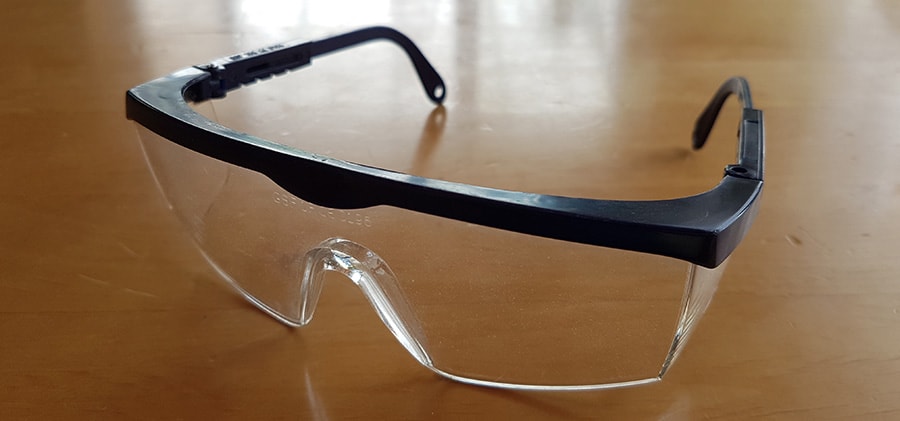
- Wear gloves: Not only do gloves help prevent a lot of the friction fatigue you would feel in your hands from the vibrations of a reciprocating saw, but they can also help protect you if the saw should slip while operating. Gloves are also a useful accessory when you’re using a reciprocating saw to cut back thorny bushes, such as holly.
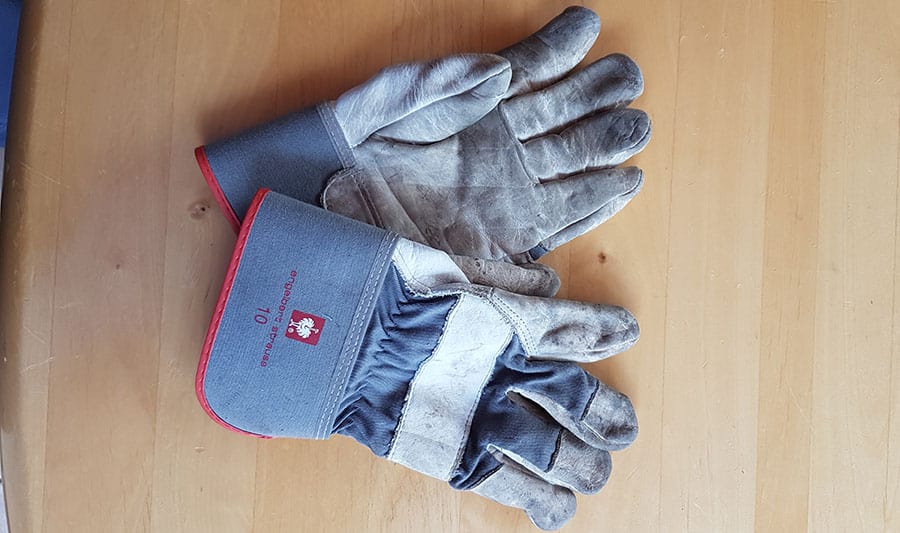
- Wear earplugs: The repetitive noise of a reciprocating saw can be damaging to hearing over long periods, and it’s gradual enough that you won’t notice the hearing loss until it’s too late to reverse it. Some people can also become affected by conditions such as tinnitus (ringing in the ears). Protect your hearing by wearing earplugs to muffle the sound of the saw.
Alternatively, you can get a safety helmet with eye and ear protection here on Amazon, so you will be ready for all kinds of reciprocating saw or chainsaw work in your garden.
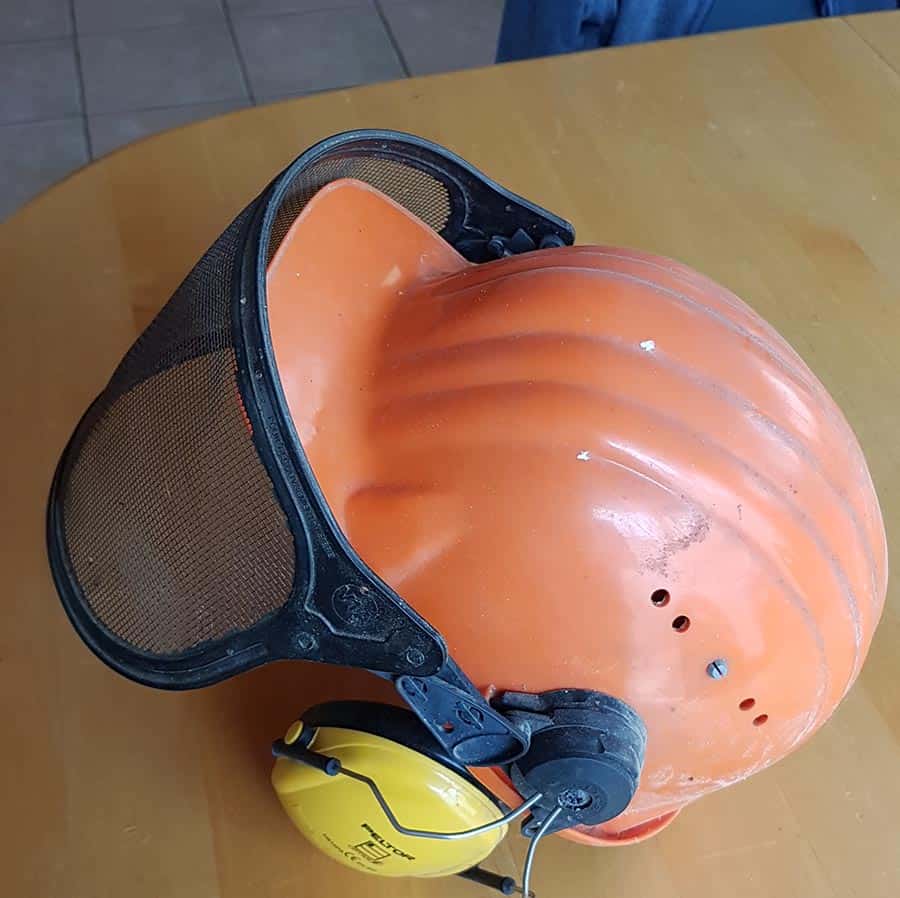
- Don’t touch the blade after operation: The blade on a reciprocating saw becomes very hot from friction during cutting operations, and touching it with your bare hands right after use can lead to a severe burn on your hands and fingers. Make sure that the saw has had plenty of time to cool off before attempting to remove or adjust the saw blade.
- Make sure the saw is turned off before adjusting or removing the saw blade. The reciprocating saw should always be unplugged or the battery unit removed before attempting to touch or work with the saw blade by hand. This is never safe to do while the saw is operational since accidentally pressing one of the buttons can lead to an injury or even an amputation.
Reciprocating saws are easy to use as power tools go and can be successfully operated by many different people. However, because they’re a power tool, they’re still capable of doing a lot of damage if they’re operated incorrectly.
Reciprocating Saws Are Good for Pruning
If you get the right kind of reciprocating saw for the job and you familiarize yourself with how to operate it effectively, a reciprocating saw can be a great tool to get the majority of your landscaping work done in a quarter of the time it would take you to do it manually with pruning shears. But even though this power tool is a good tool for novices, it should still be treated with respect.
Exercising caution and wearing protective equipment while using reciprocating saws can ensure that you stay safe and your landscaping looks great!

